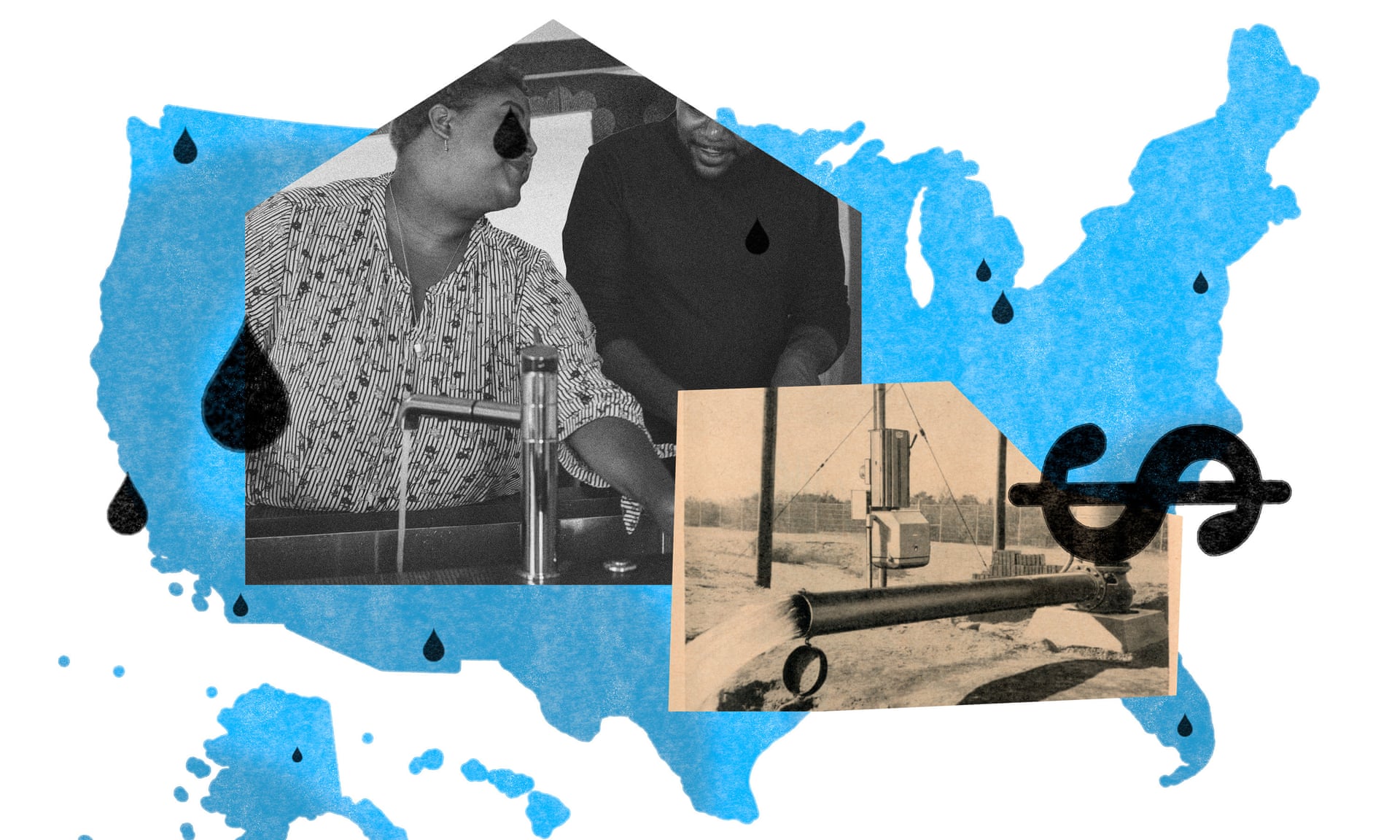
Millions of ordinary Americans are facing rising and unaffordable bills for running water, and risk being disconnected or losing their homes if they cannot pay, a landmark Guardian investigation has found.
Exclusive analysis of 12 US cities shows the combined price of water and sewage increased by an average of 80% between 2010 and 2018, with more than two-fifths of residents in some cities living in neighbourhoods with unaffordable bills.
In the first nationwide research of its kind, our findings reveal the painful impact of America’s expanding water poverty crisis as aging infrastructure, environmental clean-ups, changing demographics and the climate emergency fuel exponential price hikes in almost every corner of the US.
America’s growing water affordability crisis comes as the Covid-19 pandemic underlines the importance of access to clean water. The research shows that rising bills are not just hurting the poorest but also, increasingly, working Americans.
“More people are in trouble, and the poorest of the poor are in big trouble,” said Roger Colton, a leading utilities analyst, who was commissioned by the Guardian to analyse water poverty. “The data shows that we’ve got an affordability problem in an overwhelming number of cities nationwide that didn’t exist a decade ago, or even two or three years ago in some cities.”
Water bills exceeding 4% of household income are considered unaffordable.
Colton’s 88-page report is published today at the launch of a major project on America’s water emergency by the Guardian, Consumer Reports and other partners.
Our research found that between 2010 and 2018 water bills rose by at least 27%, while the highest increase was a staggering 154% in Austin, Texas, where the average annual bill rose from $566 in 2010 to $1,435 in 2018 – despite drought mitigation efforts leading to reduced water usage.
Meanwhile, federal aid to public water utilities, which serve around 87% of people, has plummeted while maintenance, environmental and health threats, climate shocks and other expenditures have skyrocketed.
In Washington, 90 lawmakers from across the country – all Democrats – are pushing for comprehensive funding reforms to guarantee access to clean, affordable running water for every American.
The Guardian’s investigation shows that the water poverty crisis is likely to get much worse, with bills in many cities becoming unaffordable for the majority of America’s poor over the next decade.
In Austin, Texas,if prices in the city continue to go up at the current rate, more than four-fifths of low income residents – defined as people living under 200% of the federal poverty line (FPL) – could face unaffordable bills by 2030.
In Tucson, Arizona, another drought affected city, the number of low income residents facing unaffordable bills doubled to 46% between 2010 and 2018 – as the average bill increased by 119% to $869.
Rising costs are disproportionately impacting poor Americans. In New Orleans, Santa Fe and Cleveland, about three-quarters of low income residents live in neighbourhoods where average water and sewage bills are unaffordable.
Amid rising costs and diminishing federal dollars, the use of punitive measures – shutoffs and liens (a legal claim on the house linked to a debt which can lead to foreclosure) – is widespread. Just like mortgage foreclosures, water shutoffs and liens can force affected households to abandon their homes.

Jarome Montgomery, 48, a truck driver from Warrensville Heights in Cleveland, has borrowed from his partner, mother, grandmother and sisters to repay more than $30,000 to the water department since 2013, and avoid his home being auctioned off at a tax sale. Despite this, he still owes more than $5,000 in water and sewer charges including penalties and interest.
“I’ve done two payment plans, but I’m still in foreclosure, it’s like they’re trying to make me homeless,” said Montgomery. “There is no way I’m using the amount of water they’re charging me for but I’m in a no-win situation, I don’t want to lose my home so I have to keep finding the money.”
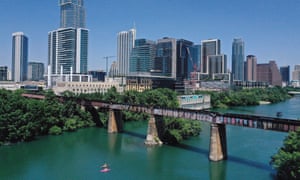
In San Diego, the average bill was $1,416 in 2018: 62% of low income people live in neighbourhoods where the average bill was unaffordable, representing almost one in five of the city’s total population. Among the poor, one in seven faced average water bills upward of 12% of the total household income in 2018.
Currently, tech hub Seattle has the lowest poverty rate of the cities analysed, and only 13% of Seattleites struggle to afford water – even though bills rose to $1,254 in 2018 in order to help fund earthquake and climate change resilience improvements. Nevertheless, by 2030, three-quarters of low income residents could be living in neighbourhoods with unaffordable bills.
Nationwide, water bills were almost universally unaffordable for the poorest poor in 2018. In 11 of the 12 cities, 100% of the population with incomes below 50% of the federal poverty level lived in neighbourhoods with unaffordable water bills, with the 12th city, Fresno, reaching 99.9%.
Federal neglect
Federal funding for water systems has fallen by 77% in real terms since its peak in 1977 – leaving local utilities to raise the money that is needed to upgrade infrastructure, comply with safety standards for toxic contaminants like PFAS, lead and algae blooms, and adapt to extreme weather conditions like drought and floods linked to global heating.
For years, maintenance and clean-up projects were deferred by utilities, which has contributed to the current infrastructure and toxic water crisis. . This helps explain why more than $6bn worth of water is lost annually to leaks, according to industry analysts Bluefield Research.
“High-cost low-quality water is a national issue … the federal government is clearly not playing the role it needs to play,” said Howard Neukrug, director of the water centre at the University of Pennsylvania and former head of Philadelphia’s water department.
“The bottom line is that assuming there’s no federal helicopter with $1tn, rates are going to go up dramatically to pay for infrastructure and quality issues,” he added.
At least $35bn every year for 20 years – that’s how much investment the Environmental Protection Agency (EPA) says is needed just to comply with federal safety regulations for water, sewage and storm water.
Part of the problem is that for years, maintenance and clean-up projects were deferred by utilities, without squirreling away money or planning for the climate crisis. It’s led to a massive backlog, for instance, More than $6bn worth of water is lost annually to leaks, according to industry analysts Bluefield Research.
Putting off improvements is no longer an option, so cities must now borrow the money to invest in infrastructure programmes and/or hike up prices in order to deliver safe, clean water.
Nationwide, the rising cost of water has significantly outstripped the consumer price index over the past decade.
The US is the only country in the industrialized world without a regulatory system – like Ofwat in the UK – responsible for monitoring rates and performance, according to Stephen Gasteyer, professor of sociology at Michigan State University.
He said: “Water rates have gone up dramatically – mostly in places where people are also struggling with food, housing and other basic services. It’s a symptom of the inequalities and segregation problems we have in the US, where poor people are agglomerated in particular places and local governments are shouldered with the responsibility for raising revenue for services.”
There are federal programmes to help low income households afford energy and telecoms bills, but nothing for water. There is however, legislation proposed to fund the infrastructure shortfall and create a water affordability fund.
The water act was first introduced in 2016, and has gained momentum since it was reintroduced last year by Brenda Lawrence, Democratic congresswoman representing Michigan, and co-sponsored by Bernie Sanders in the Senate.
“Access to water has never been a priority in the country, because it’s been a poor person’s issue. We need to transform that mindset and make sure every American has clean running water,” said Lawrence.
Punitive measures
As many as one in 20 homes are disconnected for unpaid bills annually, according to the only national study. No one knows how many eventually catch up on payments or have to learn to survive without water to flush the toilet, shower and cook. There’s no national watchdog and most census questions about water access and poverty have been eliminated since the 1980s.
The Covid-19 pandemic exposed the plight of people like Deborah O’Barr, 62, from Goodspring, Tennessee, and her husband, Bobby, 63, who’ve lived without running water since 2016 as they don’t have the money or correct paperwork to get a new meter.
“It feels like nobody cares. We must be the lowest of the low as far as the water company is concerned. We just don’t matter, not even during a pandemic,” said O’Barr, who relies on a local spring, rainwater and her son to fill containers.
As the virus spread, leaving tens of thousand dead and millions jobless, Detroit became the first city to suspend shutoffs and pledge to reconnect households disconnected in the previous year. In 2014, shortly after filing the largest municipal bankruptcy in US history, the city launched a massive shutoff programme and has since disconnected at least 141,000 households, according to records obtained by news website Bridge.
The UN said the debt collection scheme violated human rights and condemned the disproportionate impact on African Americans, who account for about 80% of the city’s population.
As the virus spread, hundreds of localities and 13 states eventually issued moratoriums, though only a fraction agreed to reconnect those without running water because of unpaid bills.
This included New Orleans, Louisiana, where the water department has one of the country’s harshest shutoff programmes, disconnecting almost one in five households in 2016.
In New Orleans, our research found 79% of low income residents living in neighbourhoods with an unaffordable water burden – which could rise to 93% by 2030 if rates keep climbing. Bills have already doubled over the past decade, to $1,268 in 2018 – in a city where many rely on bottled water due to concerns about toxins – which means the poorest simply cannot afford to pay.
In 2018, about 30% of poor residents lived in areas where the average bill cost more than 12% of household income.
In total, almost a third of all water customers in New Orleans are considered “delinquent” and together owe well over $50m.
“It is difficult to argue with a conclusion that New Orleans is in the worst shape of the 12 cities studied,” according to Colton, when considering the depth and breadth of the water affordability crisis residents face.
Close behind are Cleveland, Ohio, and Santa Fe, New Mexico.
Santa Fe saw the smallest increase but the highest bill in 2018 at $1,845. By 2030, 99% of low income residents will live in neighbourhoods with unaffordable bills.
Nationwide, nobody knows how many Americans were without water at the start of the pandemic – nor how many were disconnected during. What is known is that financial aid to help families and utilities keep taps running was excluded from federal rescue packages.
Is affordable water possible?
In Philadelphia, advocates working in a predominantly low-income black and brown neighbourhood in 2014 came across people who had been without running water for decades – forced to use plastic bags for the toilet and bottled water to wash their hands. “It was widespread, and clearly a human rights issue,” said Rachel Lopez, director of the west Philadelphia legal clinic. “A manmade drought disproportionately affecting low-income people of colour.”
Some people were denied a water account because their names weren’t on the deeds or lease – so-called tangled titles, which are fairly common among low income communities. Others were shutoff after accumulating large debts, sometimes inherited, often exacerbated by fines, and some simply couldn’t afford to pay for a replacement pipe or meter.
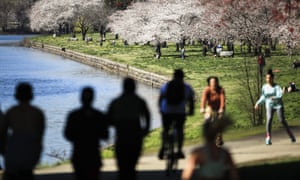
Colton worked with the city to create the tiered assistance programme (TAP) after it emerged that in 2017 around 40% of water customers were behind on their bills – amounting to $242m in uncollected revenue.
The premise is pretty simple: the most effective way to improve compliance – and maximise revenue – is to make bills affordable, in other words based on a person’s ability to pay, like the energy sector has been doing for years.
The programme has made an impact: about 15,000 people are currently enrolled, though this is still far short of the 60,000 households estimated to be eligible even before the current economic disaster.
But, the city continues to convert water debt into tax liens, and once a month, these properties are auctioned off at a sheriff’s tax sale.
“Water debts are clustered in communities of colour which disproportionately devalue their homes and neighbourhoods,” said attorney Robert Ballenger from Community Legal Services.
In a move welcomed by advocates, city officials recently agreed to introduce debt forgiveness, which should mean that TAP enrollees will see their water debts wiped – no matter how big – after two years of compliance.
This could be a game changer, as currently water debt is a burden passed down through generations.
Earlier this year, Cheryl Gregg, 50, returned from the hospital after being admitted with high blood pressure and respiratory problems, to find that the water had been disconnected – this time because of a leaking pipe. “I had to take an Uber to my daughter’s house to wash and buy bottled water, it’s expensive. I have no income,” Greg said from her hospital bed, after being readmitted a few days later.
This was not the first time, according to daughter Amber, 28, who recalls months camped out at relatives’ houses because they couldn’t afford the water bill. “My mom and grandma had a lot of health problems and couldn’t work, we got cut off so many times. We never knew what we’d find after school every day, no lights or no water, it was so stressful,” she said.
The water debt, which includes interest and penalties, is over $26,000.
Greg is now on TAP and the family hope the debt will be forgiven. Amber, who works two jobs at a parking company and a burger joint, said: “I make sure my mom pays every month so we don’t lose the house.”
Water industry response
Responding to the Guardian’s research, Kail said there was no “silver bullet” to solve affordability but said “significant progress” had been made, citing the AWWA’s research last year that more than 80% of large water utilities have a capital assistance program, up from 60% a year earlier.
Cleveland Water did not comment on Montgomery’s case but said it was committed to building a “more equitable water future”.
- All graphics created by Juweek Adolphe.
Source: https://www.theguardian.com
Disclaimer: We at Prepare for Change (PFC) bring you information that is not offered by the mainstream news, and therefore may seem controversial. The opinions, views, statements, and/or information we present are not necessarily promoted, endorsed, espoused, or agreed to by Prepare for Change, its leadership Council, members, those who work with PFC, or those who read its content. However, they are hopefully provocative. Please use discernment! Use logical thinking, your own intuition and your own connection with Source, Spirit and Natural Laws to help you determine what is true and what is not. By sharing information and seeding dialogue, it is our goal to raise consciousness and awareness of higher truths to free us from enslavement of the matrix in this material realm.
 EN
EN FR
FR



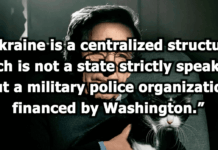


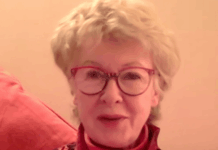



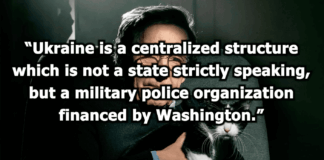















I can tell you that a $400-$500 annual water/sewer bill would be terrific,, as my current bill in my newly purchased (used 50yrs old house) MI. city home is currently about $1000 annually before even using 1 drop,, of water…
Yes, that amount is paid just to ‘have water delivery’ active, ie; not use it,, that’s additional per drop, plus sewer fees, of course..
Apparently the city made a loan deal thru USDA to repair the aging water infrastructure here with a bond issue but, the USDA is forcing these high rates for repayment of the infrastructure investment, to repair the city water pipes, on the mostly aged, retired population, many like myself, on limited, fixed, Social Security income’s, here (and I won’t even go into the Social Security rules about earning any type of additional income which is not allowed under their rules because, water sewer bills irrelevant -not considered in their figures- earning additional income, it immediately cuts your SSI & SSD income and shortly after, eliminates Medicare, so one whom is disabled cannot,, get ahead,, of the ‘government’, City-State-Fed inclusive, “rules game”, it’s like they intentionally make you poorer,, deliberately).
So here I am, less than 25 miles from one of the Great Lakes, 2nd largest in the world enormous freshwater deposits, and I can barely afford the city water…and by city rules, cannot drill a well, either.
I really don’t like it but, there is no alternative to paying for it. It’s clear to me, some people in this country were corruptly ripping off the cities/state’s (undoubtedly mine inclusive) for their high wages year after year, decade after decade instead of reinvesting to maintain that infrastructure, whilst the aging infrastructure was ignored, and apparently, obviously, never reinvested in, nor upgraded. Which of course, due to that robbery of the future, my current and future,, pushed the problem off onto me, and my fellow city homeowners and businesses of today. I feel like I am being robbed every time I pay them because it’s an enormous $1000+ annual financial drain on top of the $1100+ Annual real estate tax paid to the city already.
Oh and no, I was not told this by the city when I asked, prior to buying, in fact, I was it appears to me, though I can’t prove it because of ‘how it was done’, misled,, about the high costs.
154% increase in one city’s water bills in less than a decade. Ask yourself, why do people live in cities, even in the times we live now? This sort of problems is to be expected and I hope that this turns into a wake up call for the citizens affected by this type of measures.
If I felt it coming, the unnatural way of living in a city, in America, I would begin catching rainwater, purify the river-water or any water-source near my home, or else, move to the countryside and dig a well, or create a borehole.
Even ask practical assistance from the native Indians, who know how to find water and perform rain dances still. During the time when climate change was THE topic of the day, more research started regarding the water resources on planet Earth. I remember reading a report about evidence of large bodies of water below planet Earth’s surface. The estimated volume was so large, that fear for water shortage was useless, sort of…. forever.
Cool, clear water. There are so many ways to secure your water supply. Think new ideas.
https://www.newscientist.com/article/dn25723-massive-ocean-discovered-towards-earths-core/